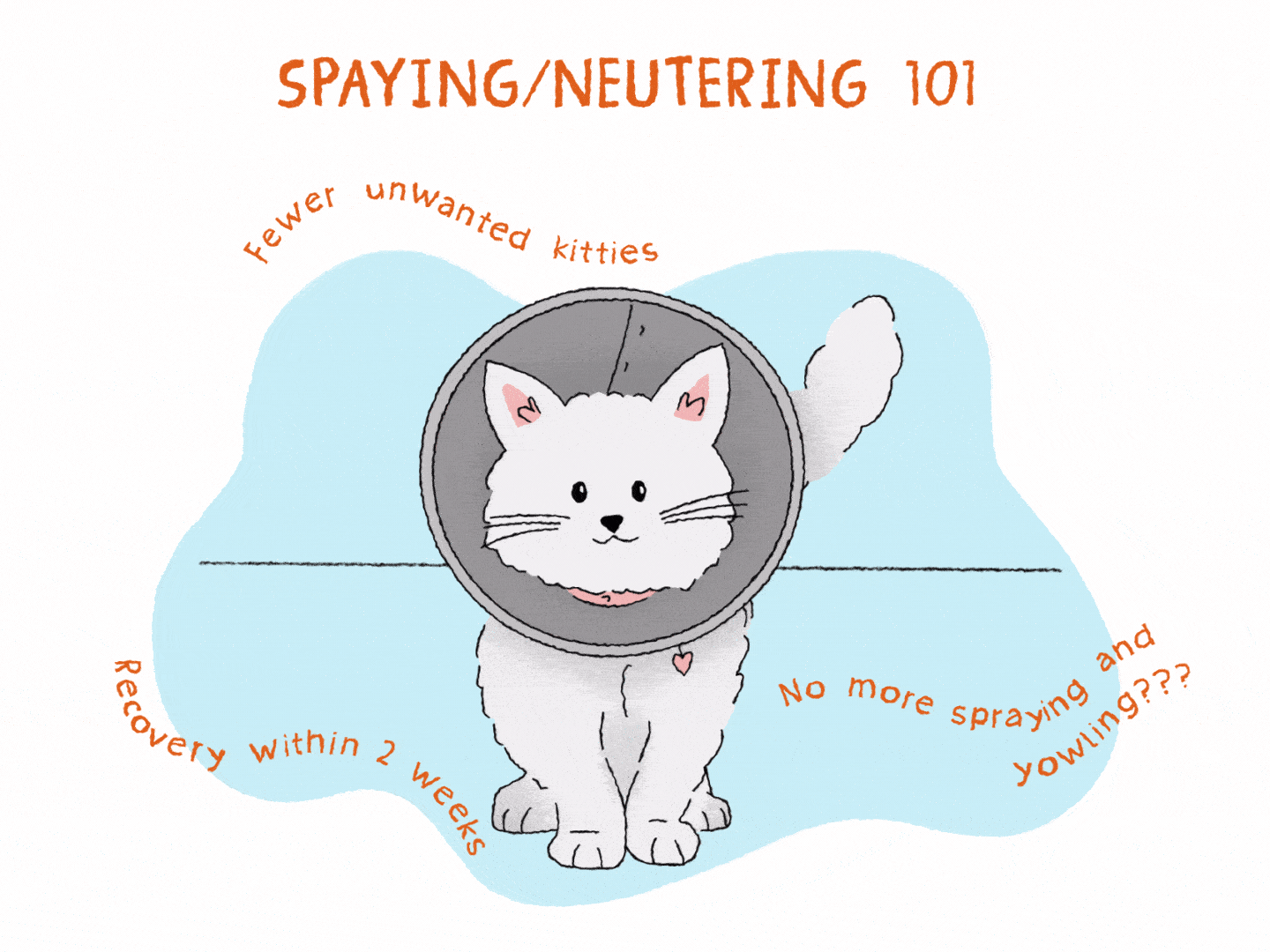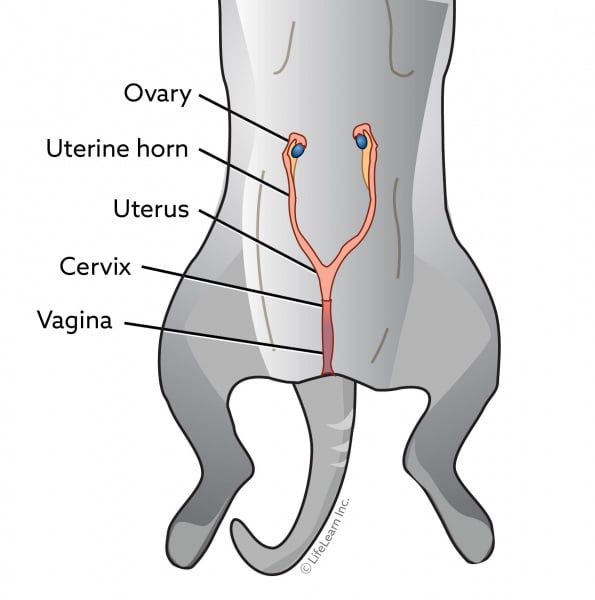After getting your cat spayed, monitor her closely and ensure she remains calm. Keep her indoors and restrict activity.
Spaying your cat is a crucial step in responsible pet ownership. This procedure helps control the pet population and offers health benefits for your cat. Post-surgery care is essential to ensure a smooth recovery. Monitor your cat for any signs of distress or unusual behavior.
Keep her in a quiet, comfortable space away from other pets. Ensure she has easy access to food and water. Check the incision site daily for signs of infection. Limit your cat’s physical activity to prevent complications. Use a cone if necessary to stop her from licking the wound. Following these steps will help your cat recover quickly and safely.
:max_bytes(150000):strip_icc()/cat-with-cone-1188007646-2000-521d0fbd60dd4f88a5ca551acd8944c4.jpg)
Credit: www.dailypaws.com
Immediate Post-surgery Care
Check your cat’s breathing and heart rate regularly. Ensure the cat is responsive and not overly drowsy. Look for any signs of pain or distress. Keep an eye on the surgical site for any swelling or discharge. If you notice anything unusual, contact your vet immediately.
Provide a quiet and cozy area for recovery. Use soft bedding to keep your cat comfortable. Ensure the space is safe and free from hazards. Keep other pets away to avoid stress. Make sure the area is easily accessible for your cat. Provide water and food nearby.
Managing Pain And Discomfort
Follow the vet’s instructions for medication. Use a syringe for liquid meds. Hide pills in a treat. Give meds at the right times. Don’t skip any doses. Ensure your cat swallows all meds. Watch for any side effects.
Your cat may hide more than usual. It may show signs of restlessness. Look for limping or difficulty moving. Watch for a loss of appetite. Check for unusual vocalizations. Notice if it licks the surgery area too much. Seek vet help if symptoms persist.
Feeding And Hydration
Ensure your spayed cat has access to fresh water at all times. Offer small, frequent meals to aid recovery.
Appropriate Diet
After surgery, feed your cat small, frequent meals. Choose a high-quality, protein-rich cat food. Avoid giving treats or human food. Keep the diet simple and easily digestible. Monitor your cat’s appetite daily. Report any loss of appetite to your vet immediately.
Ensuring Proper Hydration
Provide fresh water at all times. Check the water bowl frequently. Ensure your cat drinks enough water. Dehydration can slow recovery. Encourage drinking by placing multiple water bowls around the house. Consider using a cat water fountain to make drinking more fun.
Activity Restrictions
Keep your cat in a calm and quiet area. This helps reduce stress and promotes healing. Avoid jumping and running for at least a week. Use a small room or a large crate. This limits movement and prevents injury to the surgical site. Monitor your cat closely to ensure they are not too active. Provide soft bedding for comfort and support.
Engage your cat’s mind with gentle activities. Use puzzle toys and interactive feeders. These keep your cat occupied without physical strain. Offer new toys to keep them interested. Spend quality time petting and talking to your cat. This can reduce anxiety and promote bonding. Rotate toys to maintain interest.
Incision Site Care
Gently clean the incision site with a damp cloth. Use warm water for the best results. Avoid using any harsh chemicals or soap. Pat the area dry with a clean towel. Ensure your cat remains calm during the cleaning process. Try to clean the area at least once a day. This helps keep the incision free from dirt and bacteria. Watch for any signs of redness or swelling.
Check the incision site daily for signs of infection. Look for redness, swelling, or discharge. If the area smells bad, contact your vet immediately. Keep an eye on your cat’s behavior. Excessive licking can be a sign of discomfort or infection. Limit your cat’s activity to prevent any strain on the incision. Use an e-collar if necessary to stop your cat from licking the site. Always consult your vet if you notice any unusual symptoms.

Credit: www.felinemedicalclinic.com
Behavioral Changes
After spaying, your cat may act differently. She might feel confused or sleepy. This is because of the surgery. It is normal for her to hide or be less active. Give her time to heal. Watch her closely for any unusual behavior. If she is not eating, contact your vet. She may also be more vocal. This can be due to discomfort. Make sure she has a quiet place to rest.
Help your cat return to normal activities. Create a calm environment at home. Avoid loud noises and sudden movements. Offer her favorite toys and treats. This encourages play and normal behavior. Spend time with her to make her feel safe. Gentle petting can comfort her. Monitor her for any signs of pain. If she seems uncomfortable, contact your vet.
When To Contact The Vet
Keep an eye on your cat for any unusual signs. Look out for excessive swelling or redness around the incision. This could mean an infection. If your cat is not eating or drinking, it is a red flag. Vomiting or diarrhea is also a concern. Notice any unusual behavior, like hiding or aggression. These signs might need immediate attention.
Schedule regular vet visits to ensure your cat’s recovery. These check-ups help monitor the healing process. Your vet can catch any issues early. It is important to follow the vet’s advice. This includes any changes to diet or activity levels. Regular check-ups keep your cat healthy and happy.
Long-term Benefits
Spaying your cat offers long-term benefits such as reduced risk of certain cancers and prevention of unwanted litters. Ensuring proper post-surgery care helps your cat recover swiftly, promoting a healthier and happier life.
Health Advantages
Spaying a cat can prevent serious health issues. It reduces the risk of uterine infections and breast tumors. These diseases can be deadly for cats. Spayed cats also live longer, healthier lives. They avoid the stress of heat cycles. This leads to a happier, more content pet. Spaying also helps control the cat population, reducing the number of unwanted kittens.
Behavioral Improvements
Spaying can lead to better behavior in cats. They are less likely to roam far from home. This keeps them safer and reduces the chances of getting lost. Spayed cats are also less aggressive. They don’t fight with other cats as much. This means fewer injuries and better health. Spayed cats are more affectionate and enjoy more time with their owners. They also don’t spray urine to mark territory.

Credit: www.banfield.com
Frequently Asked Questions
How To Take Care Of A Cat After Being Spayed?
Keep the cat indoors and limit activity. Monitor the incision daily for redness or swelling. Prevent licking with a cone. Provide prescribed pain medications. Offer small, frequent meals.
Can I Leave My Cat Alone After Spay?
It’s best not to leave your cat alone for the first 24 hours after spaying. Monitor for complications.
How Long Does It Take A Cat To Recover From Being Spayed?
A cat typically recovers from being spayed in 10 to 14 days. Keep them calm and restrict activity.
How Do You Take Care Of A Stray Cat After Being Spayed?
Keep the cat in a quiet, warm place. Monitor the incision for signs of infection. Provide fresh water and soft food. Limit their activity to prevent injury. Follow up with a vet if needed.
Conclusion
Caring for your cat after spaying is essential for a smooth recovery. Monitor your pet’s behavior and healing. Keep the environment calm and stress-free. Follow your vet’s instructions closely to ensure a healthy and happy feline. Your cat’s well-being will thrive with proper post-surgery care.

Hello, this is Frank Swanson, the owner, and operator of Pet Info Hut. I created this website as a way to share my love of pets with the world. I have over 7 years of experience working with animals, and I have a passion for helping people care for their pets. I hope that you find my website useful and informative. Thanks for visiting!
